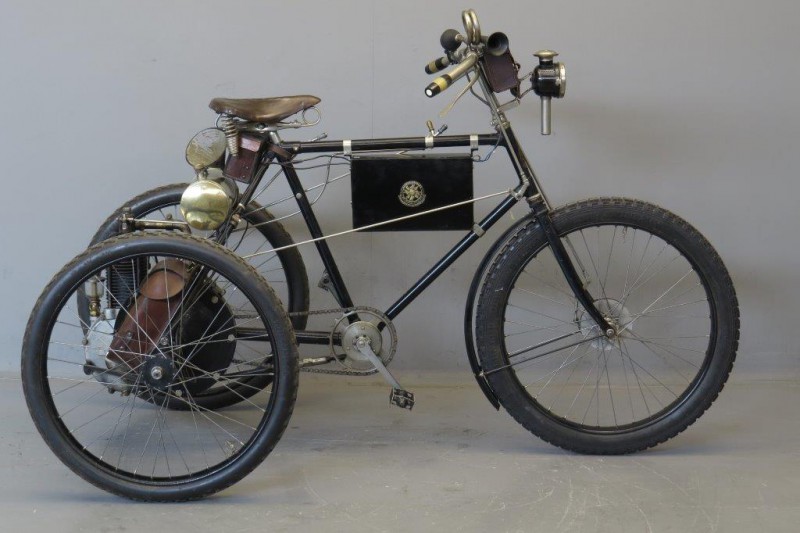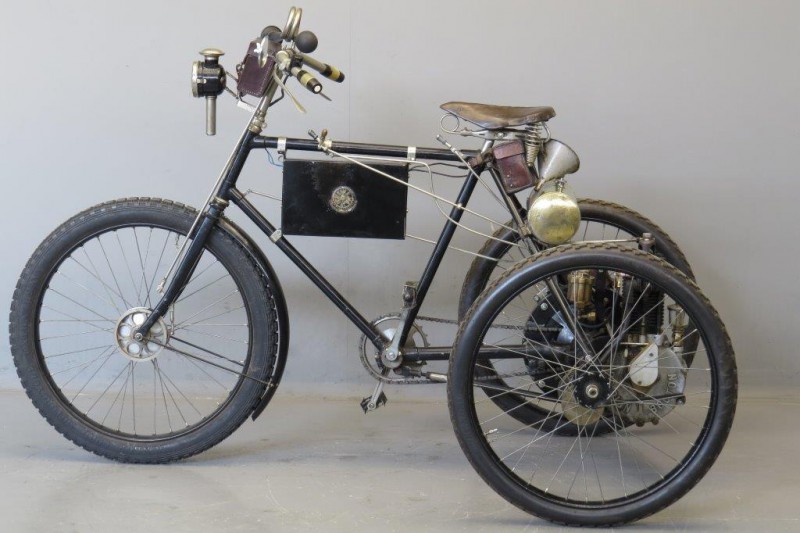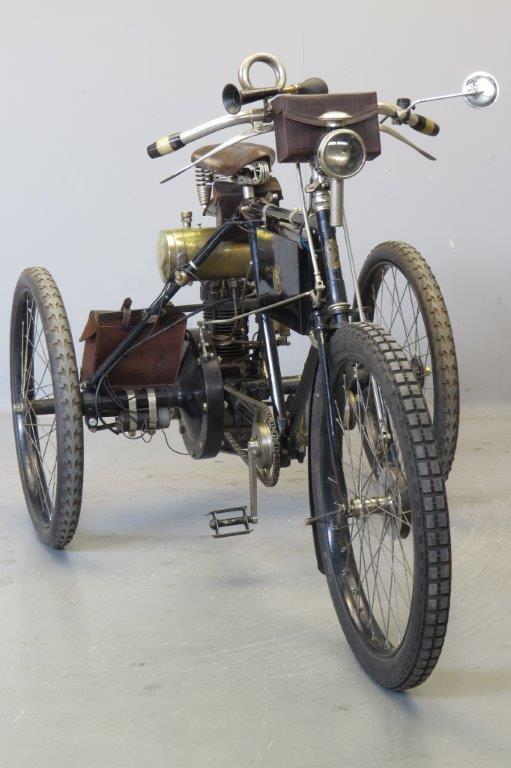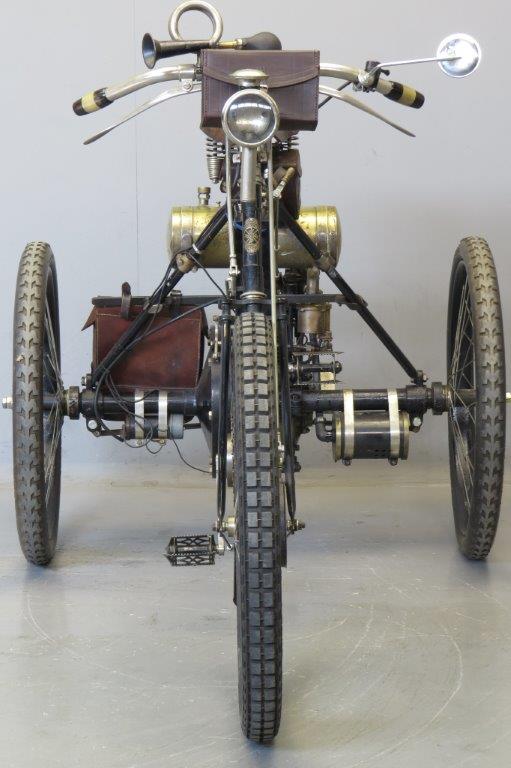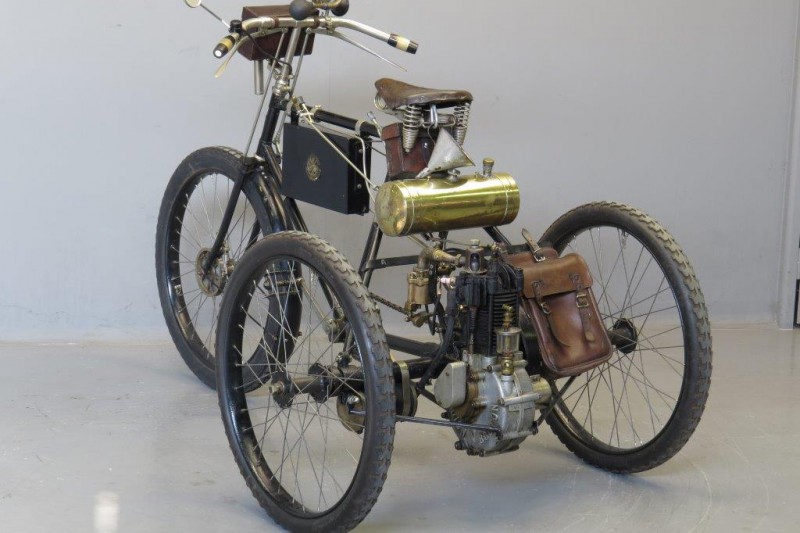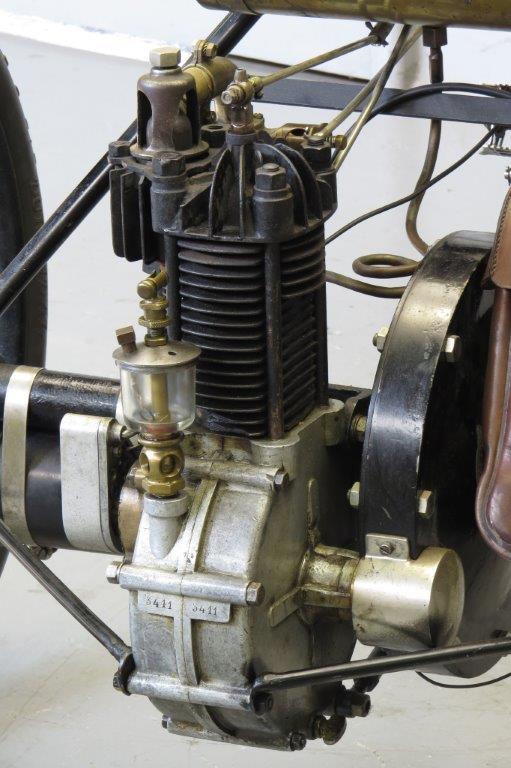Description
Rochet 1901 tricycle 326 cc AIV De Dion-Bouton engine frame #3470 engine # 3411
The De Dion-Bouton motor tricycle went into production in 1897 weighing just under 80 kg, with an output of 1.5 HP at 1,800 RPM from its 211 cc motor, although the engine had already been established in a prototype tricycle in 1895.
The tricycle with track width of 92 cm was chosen, because according to De Dion and Bouton "a bicycle appeared too fragile for this purpose”. The drive was achieved via a pair of gears from the engine directly to the rear axle.
A differential balanced the different curve radii.
The motor tricycle remained in continuous production for almost ten years.
The last model (1904) had a 955 cc displacement engine (bore 100 mm, stroke 120 mm) producing 8 HP at 1,800 RPM. On April 13, 1902, the French racer Georges Osmont set a speed record of 109.1 km/h in Nice with a De Dion-Bouton motor tricycle.
The DDB tricycle was the most successful motor vehicle in Europe
from the late 1900s until the start of the 20th century and with about 15,000
copies sold, it scored the first breakthrough for the distribution of motor
vehicles.
In particular the fast-running de Dion-Bouton engine set new standards for vehicular motors and is regarded as the precursor of all motorcycle
engines.Bouton found out that the glowplug ignition was the obstacle to higher speeds.
He developed a high voltage ignition system for the engine with circuit breaker.
Year after year the design was improved and soon many
manufacturers, big and small, introduced three wheelers, often with De Dion
engines. One of these was the firm of Rochet, which was in business between 1900
and 1910 in the town of Albert in the Somme region.
The dry battery for the ignition is located in a rectangular box
under the upper frame tube ; ignition timing can be adjusted with a small lever.
The side exhaust valve is driven via a gear-driven camshaft, and the intake valve is of the atmospheric type. The cylinder head is removable and bolted with four bolts, together with the cylinder, on the crank case.
The weight of the cast iron / aluminium engine including all auxiliary units amounts to less than 20 kg.
This particular machine was found in a scrapyard some 25 odd years ago and was in a neglected condition when acquired.
This now rare survivor is fitted with an air cooled 326cc (74×76 mm) DDB engine rated at 2¾hp that is fed by an early type spray carburettor. About 15 years ago it has been treated to a restoration and was subsequently used in some club runs, such as the Dutch “Horsepower run”. Geared for speeds in excess of 30mph, this tricycle is eligible for both the RAC London to Brighton and Sunbeam Motor Cycle Club
Pioneer runs.

